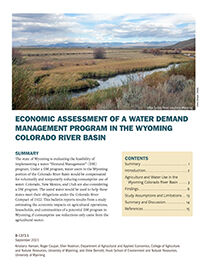Extreme to exceptional drought persist in Wyoming and Colorado
Moderate to severe drought stretches over much of Kansas and Nebraska
Heavy precipitation—from 2 to locally near 8 inches—pelted the Carolinas, southern Appalachians, mid-Atlantic region, Pacific Northwest from the Cascades westward, higher elevations of the northern Intermountain West and western Wyoming, northeastern Wisconsin, and Michigan’s Upper Peninsula. Lesser amounts of 0.5 to locally over 2 inches dampened most of a large area from eastern sections of the central and northern Great Plains eastward through the middle and upper Mississippi Valley, Great Lakes Region, Appalachians, and Atlantic Coast States. Similar amounts fell on lower elevations of the northern Intermountain West and Pacific Northwest. Meanwhile, light precipitation at best fell on the central and western Gulf Coast States, most of the Plains, and the Southwest. Temperatures were generally cool in the West and warm in the East. Temperatures average 12 to 15 degrees F above normal from the Carolinas through Alabama. above normal from the High Plains of subnormal temperatures. In contrast, it was 8 to 12 degrees F cooler than normal from Montana southward through Utah, Arizona, the Southwest and the Great Basin.
Conditions deteriorated through most of central and eastern Texas, parts of the central Great Plains, the southern High Plains, and the central tier of the Four Corners States. As the period ended, dryness had persisted or worsened throughout the large area of entrenched drought from the Rockies westward, and dry conditions were intensifying quickly across Texas and the central Plains.
High Plains
A few inches of precipitation fell on the highest elevations, particularly in western Wyoming. This induced some reductions in drought severity there, but broad areas of extreme to exceptional drought remained across the rest of Wyoming and Colorado, with the most severe classification D4 almost ubiquitous across western Colorado. Farther east, moderate to severe drought persisted across North Dakota, and generally moderate to severe drought stretched over much of Kansas and Nebraska. Conditions deteriorated across most of Kansas, but conditions were more stable farther north.
South
Dryness and drought expanded and intensified significantly across Texas and adjacent parts of Oklahoma and Arkansas. Since mid-September, precipitation totals were 4 to locally 8 inches below normal across central and northeastern Texas, southern Oklahoma, and adjacent Arkansas. D0 and D1 broadly expanded across central and eastern Texas. Drought is more entrenched farther west in Teas, where many areas near New Mexico declined into D3 and D4 this week. Drought has been entrenched longer here than farther east. In the last half-year, much of western Texas outside the Panhandle received only 15 to 35 percent of normal precipitation.
Midwest
Moderate precipitation—slightly above normal—fell on most of the Midwest, with heavier amounts of 1.5 to 3.0 inches falling on parts of southern Illinois and Missouri, and over the central Great Lakes. This had the effect of whittling down dryness and drought coverage compared to the previous week, especially across eastern Minnesota, central Iowa, southwestern Missouri, and a stripe across southern Illinois and central Indiana. The past 3 months brought 4 to7 inches less precipitation than normal from much of western Indiana, central Illinois, and the northern half of Illinois.
West
Exceptional D4 drought now extends across large sections of New Mexico, Arizona, and Utah as conditions intensified along the middle tier of the Four Corners States. In some areas, moisture budget shortages date back to the weak monsoon season of 2018. Across most of Nevada, Utah, and New Mexico, precipitation totals were among the driest 5% on record at many locations. Surrounding these areas, a large area of D3 extreme drought extended from New Mexico and Colorado eastward through most of Arizona and Nevada, and D3 also stretched from northern California northward through a large part of Oregon into southern Washington. This despite patches of improvement from moderate to heavy precipitation in parts of the Pacific Northwest and northern sections of the Intermountain West and Rockies. Dryness has not been as severe along the northern tier of the region compared to areas farther south, and precipitation was sufficient to remove all dryness from central and northern Idaho eastward across western and much of northern Montana.


